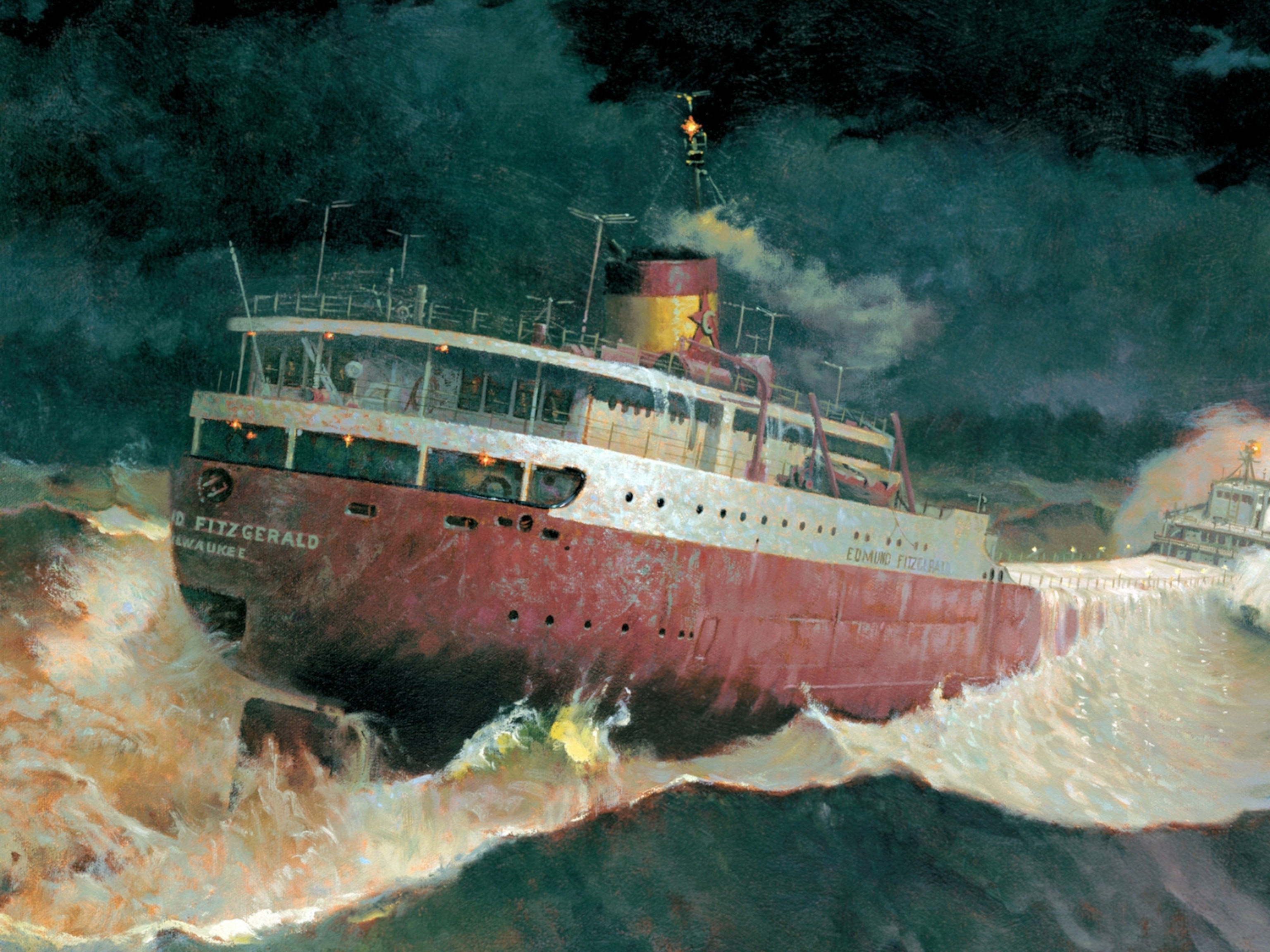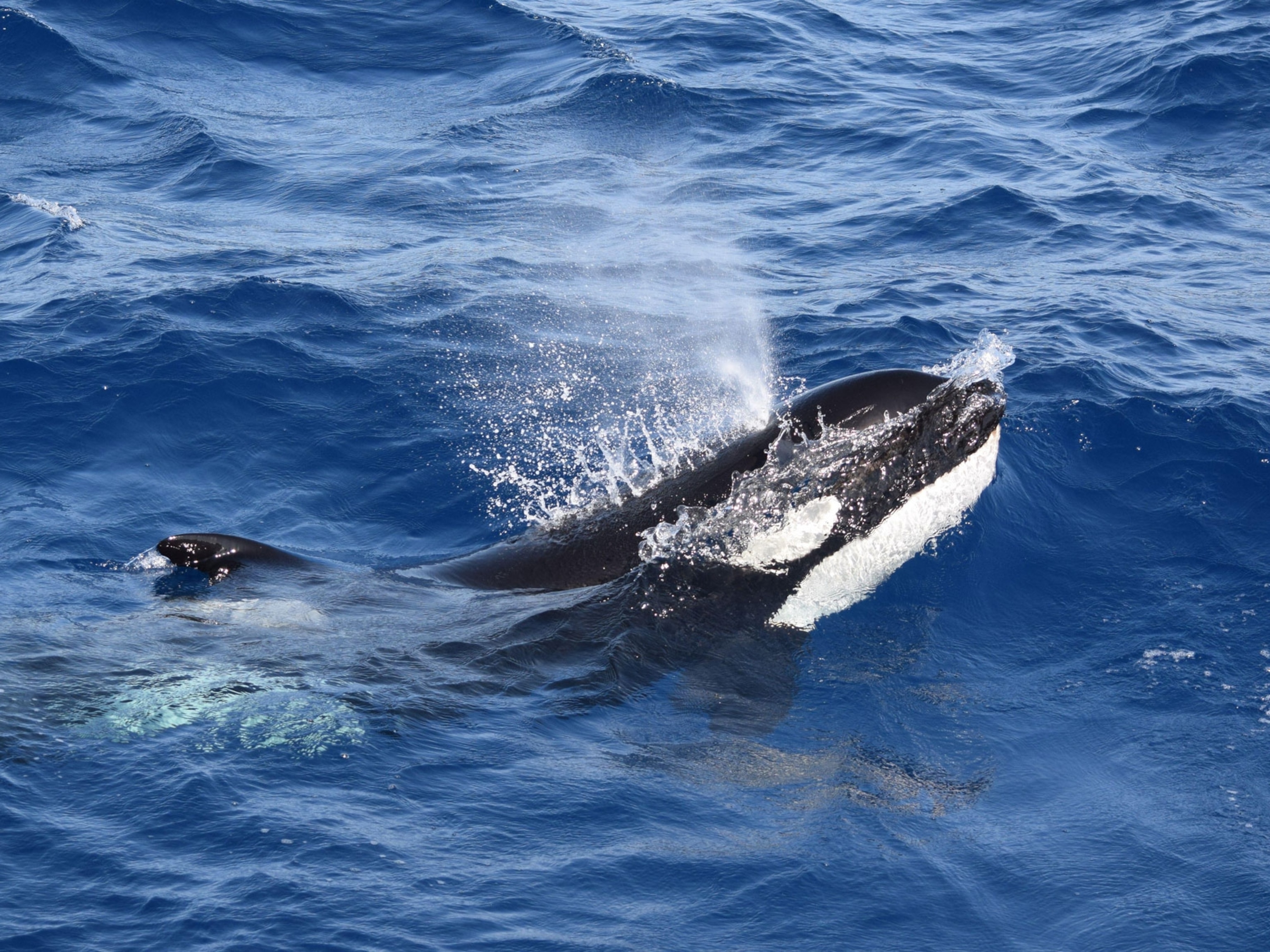
U.S. Icebreaker Polar Star: Explaining the Ship in Antarctic Rescue
Though past its expected life span, the overhauled 38-year-old cutter is still very powerful.
The U.S. Coast Guard cutter Polar Star, perhaps the most powerful non-nuclear icebreaker in the world, is steaming toward Antarctica to bring a key missing element—power—to the rescue effort around the icebound Russian vessel M.V. Akademik Shokalskiy.
Amid all of the misfortunes that have plagued rescuers, there's at least one bit of good luck: The Polar Star happened to be in port in Sydney, Australia, this week on its first deployment since a $90-million overhaul.
With engines that can deliver 75,000 horsepower, the Polar Star has 25 times the punch of the Shokalskiy and 5.5 times the horsepower of the Chinese rescue ship Xue Long, or Snow Dragon, which is itself now trapped in thick, frozen ice along with the Russian vessel.
On Saturday, the U.S. Coast Guard said it would respond to the call it received Thursday night from the Australian Maritime Safety Authority (AMSA), the organization coordinating the rescue of the trapped ships, to help break a navigable path through the ice. (Related: "Best Pictures From Dramatic Antarctic Ship Rescue.")
The Polar Star is expected to reach the vessels, about 1,500 nautical miles south of Hobart, Australia, by Sunday.
Although 52 of the passengers who were stranded in the ice since Christmas Eve were airlifted from the Shokalskiy by helicopter on January 2, the Russian crew remains with the immobilized ship.
"We are always ready and duty-bound to render assistance in one of the most remote and harsh environments on the face of the globe," said Vice Admiral Paul F. Zukunft, the Coast Guard's Pacific area commander. (Related: "Antarctic Ship Rescue: 5 Lessons From the Trapped-Vessel Drama.")
A Lot of Horsepower
But in fact, the Polar Star, the United States' only active heavy icebreaker, would not have been ready to assist before this season.
Built in 1976 with an anticipated life span of 30 years, the vessel had been placed in near-mothballed "caretaker status" in 2006.
Its twin sister ship, the Polar Sea, continued in service until engine failure in 2010 forced it into inactive status. That same year, the Coast Guard resolved to return the Polar Star to duty, and the vessel underwent a complete overhaul, including refurbishment of its engines, hydraulics, and electrical systems. (Related: "Antarctic Ship Drama: What Is an Icebreaker, Really?")
The Polar Star finished its ice tests in July and set out from its home port of Seattle in early December on its first major deployment and primary mission.
Nicknamed Operation Deep Freeze, that mission is to break a channel through the sea ice of McMurdo Sound to resupply and refuel the U.S. Antarctic Program's (USAP) McMurdo Station on Ross Island. The Polar Star happened to be on a stopover in Sydney when it received the call from Australian authorities to help free the Shokalskiy and the Snow Dragon.
"I would expect it could run circles around those other ships," said Lawson Brigham, a retired U.S. Coast Guard captain who is now a professor at the University of Alaska, Fairbanks. (See also: "Ship Stuck in Antarctica Raises Questions About Worth of Reenacting Expeditions.")
In a telephone interview before the announcement that the ship would be called in to assist, Brigham pointed out that the Snow Dragon is actually a bigger ship than the Polar Star: It's 150 feet (46 meters) longer and, at nearly 15,000 gross tons, is 2,000 gross tons heavier than the U.S. ship.
"But it doesn't have a whole lot of power for that gross tonnage," he said. Its engines can deliver 13,700 horsepower, certainly more than the Shokalskiy, at 3,000 horsepower, but not enough to ram through ice that has built up at that location following high winds and a blizzard.
Big Engine That Could
The Polar Star and now inactive Polar Sea were both built with a unique dual propulsion system, including both a diesel-electric system for steaming over long distances, and gas turbines, like those on a commercial jetliner, that can provide extra power for ramming through ice.
The Russians are believed to have the only icebreakers in the world that are more powerful than the United States' Polar-class vessels, but those are powered by nuclear reactors and they have never been deployed in the Southern Hemisphere. (See "Arctic Shipping Soars, Led by Russia and Lured by Energy.")
Because icebreakers are so expensive and labor-intensive—they take about $1 billion and eight to ten years to build from scratch—the question of the condition of the Polar icebreakers and whether to invest in new capacity has been a subject of debate for years in Washington, D.C. The company that built both ships, Lockheed Shipbuilding of Seattle, exited the shipbuilding business in the late 1980s.
A Congressional Research Service report said that certain major equipment from the Sea was transferred to the Star to facilitate the vessel's return to service. But after a Coast Guard official said that the Sea might be scrapped, Congress barred any dismantling of the ship and ordered study of extending its life to 2022.
The thick steel hull is considered the costliest part of an icebreaker, and budget-conscious officials have tried to squeeze as much life as possible out of the vessels as long as they remain serviceable.
Despite the Polar Star overhaul meant to extend its life by seven to ten years, there have been questions about how long the ship can serve. The CRS report noted that an August 2010 press report quoted the commandant of the Coast Guard, Admiral Robert Papp, as saying, "We're getting her back into service, but it's a little uncertain to me how many more years we can get out of her in her current condition, even after we do the engine repairs."
New Icebreaker Needed
The Coast Guard has started the process of commissioning for design and building of a new polar icebreaker, but the project has been hit hard by budget cuts.
The United States has only one other icebreaking vessel, the U.S. Coast Guard cutter Healy. Built in 2000, it has more modern systems than the Polar ships but has roughly half the horsepower, and it's considered a medium-size icebreaker.
For now, all eyes are on the Polar Star, which cut short its planned stop in Sydney to assist the icebound Russian and Chinese vessels.
The Coast Guard said its plan is to free the stranded ships and then resume its mission to resupply and refuel McMurdo Station, which is the logistics hub for the U.S. National Science Foundation's research in Antarctica and the Southern Ocean.
But the Antarctic is unpredictable and its ice has ensnared far younger vessels than the Polar Star.
Follow Marianne Lavelle on Twitter.







